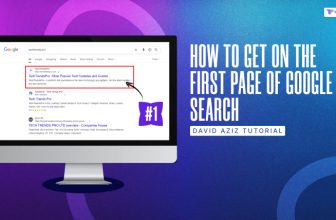
The most challenging part about digital marketing is its fluidity, as new trends arise every year, and Google updates its algorithm around 500 times a year. This means there’s at least one update a day, and those lacking SEO experience will struggle to optimize the website content accordingly. Under such a circumstance, you must continuously work with your website to drive organic traffic.
Even for an SEO expert, it is sometimes impossible to keep track of all the minor changes in the algorithm, but they are professionals who stay in touch with the sector and don’t miss any important trends. Suppose you want to stay in the know about the techniques that will drive organic traffic to websites in 2024. Keep reading because this article provides you with essential information. You’ll have no issue staying ahead of your competition and attracting new customers.
Make Sure You Understand The Core Web Vitals

If you’re new to digital marketing, this might be the first time you hear about core web vitals. However, it’s time to learn more about them, as they will become metric benchmarks in 2024 for brands that want to increase their website traffic naturally.
Google introduced the core web vitals in 2020 as a series of metrics used to determine a web page’s user experience. They measure the visual stability, interactivity, and loading performance to help the search engine understand how satisfied a user will be with the page’s performance.
Here are the three core web vitals metrics important for SEO Europe.
– Largest contentful paint which measures page speed, or the time it needs to load the content. It’s ideal to have an average LCP of 2.5 or lower.
– First input delay, which measures the page’s interactivity. Websites should target an FID lower than 100 milliseconds for an improved user experience. It helps drive organic traffic.
– Cumulative layout shift, which measures the web page’s visual stability. It’s best to have the CLS lower than .1.
An agency specialized in digital marketing in the USA or worldwide has the necessary tools to measure these metrics and identify your website’s core web vitals capabilities.
Website Optimized For Mobile SEO

People heavily rely on their mobile devices, and mobile traffic will continue to grow steadily. Mobile-first indexing is one of the most important characteristics search engines review when evaluating a website’s SERP.
Besides the traditional mobile device optimization techniques, app store optimization will gain ground in 2024 because it can boost an app’s visibility to drive users’ curiosity, get more downloads, and generate a higher profit. App store optimization can drive organic traffic to app stores.
You can employ two strategies to boost an app’s visibility in search engines:
– Improve the app’s reviews and ratings by encouraging customers to leave feedback and respond to negative comments.
– Improve the app’s metadata (keywords, description, and title).
An SEO USA expert can provide you with a series of recommendations to optimize your app for mobile, like the following:
– Avoid keyword stuffing
– Include keywords in the description
– Add keywords to titles
– Optimize the app’s screenshots
Optimize Your Content
Digital PR practitioners know that it’s crucial to optimize the current content strategically to increase online visibility, boost brand reliability and finally, drive organic traffic. Content optimization starts with on-page optimization of meta tags, so you should focus on:
– Creating optimal description and meta titles
– Ensuring your content is readable
– Reaching the appropriate word count for each page
– Adding primary and secondary keywords
Here Are Some Tips On How To Optimize Your Existing Content

To drive organic traffic depends on several factors. Identify the ideal word count for each web page and keyword densities. Your pages should answer search queries, and while some require a snippet answer, others might require in-depth articles of 1000+ words.
– Ensure you use the right meta titles to optimize content.
– Update your content regularly to match the latest queries.
– Cover sector-related questions to provide your public answers to their questions.
Voice Search Optimization
Voice assistants like Google, Alexa, and Siri have changed how people search for information and shop for products and services. Regardless of the kind of service a brand offers, it’s essential to be optimized for voice search or it might miss on attracting clients. Statistics reveal that voice search will make up around 50% of all online searches in 2024.
Companies can use several techniques to optimize their websites for voice search, but the most effective one is prioritizing local SEO. Usually, when someone uses voice search, they are looking for local businesses, so it’s ideal to include locations and landmarks around your company in your website content. Additionally, it’s best to use phrases like “around (your area)” and “near me” in meta descriptions.
Voice searches are highly conversational, as people use complete questions when engaging with voice assistants. Therefore, websites should also include FAQs to answer internet users’ questions.
Don’t Neglect To Optimize Your Headings
Something most people don’t know is that Google automatically rephrases over 58% of title tags, according to page heading 1. The search engine motivated its strategy by creating titles that work better for the content, describing what it’s all about, and providing users with better suggestions.
Therefore, when a website has poorly written headings or lacks them, Google could write them to provide Internet users with complete information. However, websites should have optimized headings to ensure that search engines rank their pages higher in searches. Google usually rewrites title tags when they are:
– Too long or too short
– Spammy or too promotional
– Not relevant to the content
– Duplicated among the entire website
Now that you know what to avoid, it’s easier to create headings.
Here are other recommendations to help you create title tags that reflect your content.
– Create unique title tags for each page
– Ensure the language describes the content accurately
– Keep the title tags between 50 and 60 characters
– Use keywords in the title tag, but don’t stuff them.
If you have trouble driving organic traffic to your website, you can work with a digital marketing agency like Seeders to benefit from specialized assistance.
Read Also:






